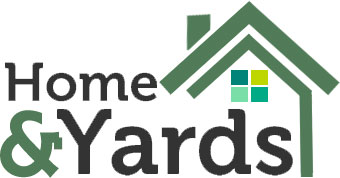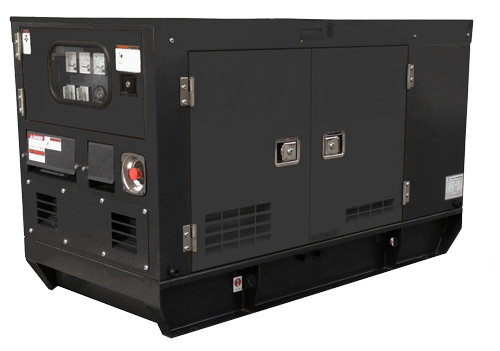Whole House Generators
Whole house generators are also referred to as home standby generators because they are meant to take over in the event of a power loss. They kick in within seconds of the power going out, and they are permanently installed at a site near your home. They can run on propane or natural gas and can power just a few designated circuits or your entire house.
How many watts do I need?
To decide how large of a generator you need, as in how many watts, you’ll need to figure out what you want to use it to run. Once you’ve decided the items you’d like to run with the generator, calculate the total wattage of those appliances or power needs. That’s the minimum wattage you need in a generator.
For example, if the power goes out in the summer at night, you might need lights on in the house and the refrigerator and central air running. This is probably the bare minimum. You may want to add some other items as well like your stove, radio or furnace in the winter. Here are common wattages of many household appliances you may want to run:
Wattages for Household Equipment
Wattages for Farm Equipment
Basic Needs for Home Power
There are a few basic questions it helps to ask if you’re shopping for a whole house generator. Start with your water setup. Are you on city water, or do you have a well? If you have a well pump, you’ll need a 240v generator of 3800 watts or greater.
What type of heat do you use? An electric furnace or heat pump usually requires 15,000 watts or more to run. In other words, you can’t run these from a portable generator. If you have oil or gas forced air unit, you’ll probably only need about 2500 watts. This depends on the size of the furnace.
If you are on city water and have a small furnace, look for a unit that has about 3000-5000 watts. If you have a well pump or larger furnace, you’ll want at least a 5000-6500 watt unit. Most households can get by with a generator of about 6500 watts or less for normal usage.
Starting Wattage vs Running Wattage
 This sounds like confusing terminology, but to put it simply, some appliances need more juice to get them started than to continue running. So for example, getting a refrigerator started and cold takes a lot more power than keeping it that way.
This sounds like confusing terminology, but to put it simply, some appliances need more juice to get them started than to continue running. So for example, getting a refrigerator started and cold takes a lot more power than keeping it that way.
Appliances and equipment that take more energy to start than to run are said to have a reactive load. For these uses, it usually takes about three times more power to get it started up than to run. Some examples of reactive loads are air compressors, air conditioners, furnace fans, freezers, refrigerators, power tools and bench grinders.
Equipment that takes the same amount of energy to start as to run are called resistive loads. Most resistive loads involve creating heat. Some good examples are toasters, toaster ovens, coffee makers and light bulbs.
These numbers are important to know because you don’t want to end up buying a generator that’s powerful enough to run whatever you need but not powerful enough to start it up.
It’s also important to know that some appliances tend to draw more power at intervals, such as a refrigerator or furnace with a fan that runs intermittently. If your refrigerator has a defrosting cycle, it will need more power if that’s running as well.
Calculating Watts Needed
A lot of times you can also look on an appliance for the wattage it takes to run it, but this can be confusing as well. For instance, if you have a 1000 watt hair dryer, that means the dryer puts out 1000 watts of energy, but it actually uses more to run it as these numbers aren’t necessarily exact. The numbers in the tables on this page reflect that and should be only used as a general guideline to get an estimate of the wattage you’ll need in a new generator.
If you know the amps and volts of an appliance (sometimes you’ll see this on the sticker or tag), you can multiply those two numbers together to get the total wattage needed to run it. Most equipment is 120 volts. Exceptions are furnaces, electric ranges, electric clothes dryers, sump pumps and hot water heaters. When in doubt, take a look at the plug. Regular 120 volt appliances have a standard two or three prong plug, whereas 240 volt uses have a much larger or odd-shaped plug going into the wall.
What is Maximum vs Rated Power?
On many generators, you’ll see listings for rated and maximum power. Maximum power or load means the maximum output it can produce. This max power is generally available for up to 30 minutes.
Rated power is the amount of power that the generator can produce over long periods. It’s calculated at about 90% of the maximum power. If you’re questioning which number to use in deciding which unit to buy, it’s safest to go with the rated power number.
Using a Portable Generator for Home Use
Portable & Inverter Generators for Recreational or Contractor Use
 Portable generators are different than whole house generators in that while they are not lightweight, you can take them with you. Most of them run on unleaded gasoline and offer limited amounts of power for small uses.
Portable generators are different than whole house generators in that while they are not lightweight, you can take them with you. Most of them run on unleaded gasoline and offer limited amounts of power for small uses.
Some come with an electric start and even have an idle control that helps them run more efficiently. Many units even have outlets so you can charge your phone or operate other electric devices.
Portable generators can be used for jobsite work, camping, tailgating or if you have a fifth wheel or RV and want to power appliances. However, if you’re in the latter category, an inverter – type generator may be a better buy for you. Inverter generators are designed to run quieter and will thus be less disruptive.
Just like with household units, when buying a portable or inverter unit, you’ll want to calculate the wattage you need.
Wattages for Contractor Equipment
Wattages for Recreational Equipment
One of the main things to consider if you have an RV is the size of your air conditioner. The size of generator needed to power these units can vary depending on the outside temperature and how efficient your air conditioner runs. A 3000 watt unit usually works well for a 13,500 BTU air conditioning unit. You may need a larger generator if you have a larger air conditioner.
If you have an RV or fifth wheel with dual AC units, you’ll be better off going with 7000 watts. If you’re a camper, boater or tailgater, 1000-2000 watts is usually sufficient for most needs.
No matter what type of generator you decide you need, you’ll want to consider budget and overall value. Whole house generators tend to be very pricey and run upwards of $2000 – $3000 before installation. If you decide to go that direction, you’ll want to pay close attention to the manufacturer’s warranty and user reviews of generators to make sure it’s a good investment for you.
If you decide to go with a portable or inverter generator, make sure you pay attention to its fuel efficiency. Many portable units can go through 10-15 gallons of gas or propane per day. While you may not plan on running it all day every day, you’ll need to have enough fuel on hand for your uses. Make sure to factor this into your final decision when it comes to cost and storage.




















